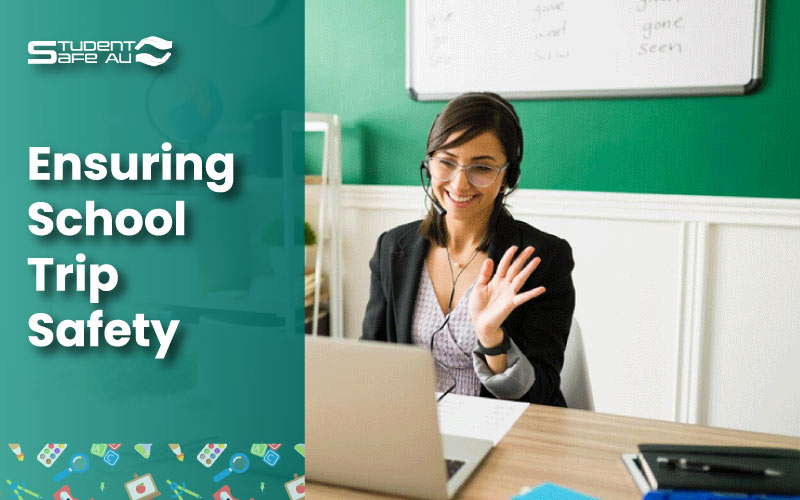Things to discuss and cross-check with school transport providers prior to a school trip
Organising a school trip is a massive responsibility for educators and coordinators. Beyond planning educational activities and ensuring student participation, the safety of all participants is paramount. One critical aspect of school trip safety is the transport arrangements, as a significant portion of the trip involves moving from point A to point B. This is where school transport providers come into play, and ensuring they’re up to the task is essential.
For independent Australian schools, Student Safe AU has earned its reputation as the top choice for bus hire for education and safety and transport management. Our thorough approach to school trip safety ensures that educators can focus on providing enriching student experiences while leaving the logistics to trusted professionals.
Before hitting the road on any school trip, here are key safety measures school coordinators should always cross-check with their transport provider.
1. Check Driver Qualifications and Experience
Regarding school trip safety, the driver is the first line of defence. It’s essential to ensure that the driver is properly qualified, experienced, and familiar with the specific requirements for transporting school children. Ask the transport provider for certifications, relevant training, and evidence of the driver’s experience with similar trips. Student Safe AU ensures drivers meet the highest safety standards, offering independent Australian schools complete peace of mind.
2. Verify the Vehicle’s Safety Features
Modern school transportation vehicles have advanced safety features, but verifying that the vehicle provided meets or exceeds all safety requirements is crucial. Double-check whether the vehicle has seat belts, emergency exits, and appropriate first-aid kits. Additionally, ensure that the vehicle has undergone recent safety inspections and is in excellent working order. Our team at Student Safe AU meticulously checks each vehicle, ensuring it’s compliant with all school trip safety protocols before every journey.
3. Ensure Appropriate Insurance Coverage
Insurance is one of the most critical aspects of school trip safety. Educators should confirm that the student transport provider has comprehensive insurance coverage, including accidents, injury, and liability, specifically when transporting school children. Having solid coverage in place offers a layer of protection for both the school and the students. When partnering with Student Safe AU, schools can rest assured that all vehicles and drivers are fully insured, providing maximum protection in the unlikely event of an incident.

4. Obtain a Detailed Route Plan
Before the trip, educators should request a detailed route plan from the transport provider. Knowing the planned route is essential for punctuality and anticipating potential safety risks, such as road closures or high-traffic areas. Discussing alternative routes in case of unexpected detours is a reasonable precaution. Student Safe AU works closely with schools to provide well-planned routes, ensuring that trips run smoothly and safely while minimising the chances of delays.
5. Confirm Emergency Procedures
In the unlikely event of an emergency, all parties need to be on the same page regarding the procedures to follow. Confirm that the transport provider has a solid emergency response plan in place, covering everything from minor breakdowns to major accidents. Each student’s well-being is the priority, so having a reliable plan that includes direct communication with the school and parents is critical. Student Safe AU prides itself on its comprehensive emergency protocols, ensuring the safety of all students during their travels.
6. Double-Check Capacity Limits
Ensuring that the transport provider does not overbook is a crucial step. Schools should double-check the vehicle’s capacity and confirm that the number of passengers, including staff, is well within the legal limit. Overcrowding can compromise school trip safety, as it may interfere with seatbelt use or emergency exits. Student Safe AU adheres strictly to vehicle capacity limits, ensuring every passenger travels comfortably and securely.
7. Request Driver Background Checks
As part of your school trip safety checklist, it’s important to ask for background checks for the driver. Schools must ensure that drivers have been vetted for any criminal records or inappropriate conduct that would make them unfit to transport children. Student Safe AU performs thorough background checks on all its drivers, ensuring that only the most trustworthy individuals are employed to drive school children.
8. Clarify Communication Protocols
During the trip, keeping the lines of communication open between the school, the transport provider, and parents is vital. Establish clear communication protocols with the transport provider, ensuring you have the driver’s contact details and know-how updates that will be shared throughout the trip. With Student Safe AU, schools benefit from real-time communication updates, giving coordinators, teachers, and parents reassurance every step of the way.
Conclusion
School trip safety should be the top priority for educators when planning outings. By thoroughly cross-checking all aspects of the transport arrangements, schools can ensure that students are in safe hands. From verifying driver qualifications to ensuring emergency procedures are in place, these safety measures help minimise risks and ensure smooth and secure trips.
With Student Safe AU, schools can trust that every journey is meticulously planned and managed. Our commitment to safety and transport management makes them the go-to provider for independent Australian schools, ensuring that every trip is not just educational but also safe and stress-free.
